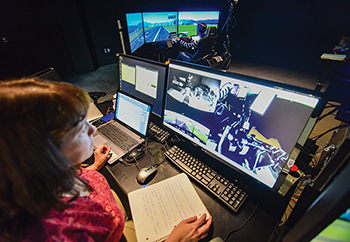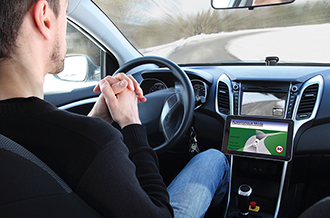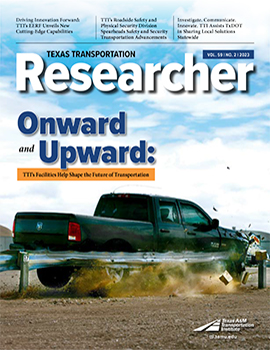Revolutionary advancements in vehicle technology and the changing dynamics of the modern roadway system have propelled the act of driving into uncharted territories, demanding a profound transformation in the driving experience. The current technological landscape — with its manifold innovations and tantalizing prospects on the horizon — holds the potential to revolutionize road safety and streamline efficiency. However, this brave new world of driving necessitates the need for drivers to equip themselves with a comprehensive understanding of these innovative systems to effectively safeguard not only their own well-being but also the lives of those who share the road with them.

The Texas A&M Transportation Institute’s (TTI’s) Center for Transportation Safety (CTS) is home to a Realtime Technologies driving simulator, which offers a state-of-the-art driving simulation platform for conducting research in human factors, driver behavior and safety technology development. The simulator provides a safe and controlled environment, which is ideal for exploring a wide variety of driver-, vehicle- and infrastructure-related research questions surrounding drivers’ mental models (i.e., the way a person thinks the world operates) and trust about using vehicle automation.
“The driving simulator’s primary objective is to enhance the safety of our nation’s roadways through an understanding of the interplay between a driver’s understanding and the surrounding road environment,” emphasizes Michael Manser, director of CTS. “By providing a controlled setting, the simulator offers a distinctive avenue for examining driver behavior and performance, enabling us to gain valuable insights into their responses to various stimuli. It is these results that help us to identify ways to directly impact the safety of drivers.”
The simulator is equipped to gather a wide range of driving data, encompassing vehicle speed, acceleration, lane position, proximity to specified objects or roadway elements, and inputs to the steering wheel, brake and accelerator pedal. By programming the simulator’s automated vehicle technologies to emulate various levels of automation — ranging from level one (lane keeping and adaptive cruise control) to levels four and five (full automation) — researchers can conduct a comprehensive exploration of drivers’ mental and physical responses at each stage. This comprehensive examination plays a vital role in understanding the development and maintenance of mental models across the entire spectrum of automation.
Other data collection systems can be used in conjunction with the simulator to provide additional information about driver behavior and responses in real-world driving situations, including
- eye tracking to record the driver’s glance patterns;
- an infrared thermal camera and physiological monitors (heart rate and galvanic skin response) to measure stress responses; and
- face, hand and foot cameras to see driver responses that may not be captured by the simulator.
“The ability to simulate a wide range of driving conditions and scenarios makes it an invaluable tool for improving road safety and developing new countermeasures to help prevent crashes,” notes Robert Wunderlich, TTI senior research engineer. “The driving simulator provides a controlled and safe environment to evaluate new vehicle technologies that are intended to ensure that road users are safe on our roadways today, tomorrow and in the foreseeable future.”

